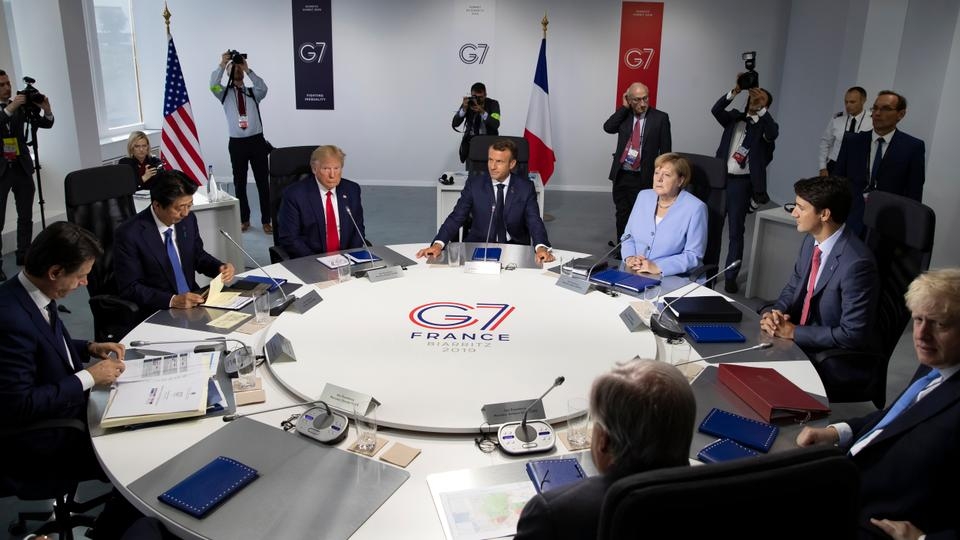Atmanirbhar Bharat and the Great Tech Standards Game
The Group of Seven (G7) countries have escalated their long simmering techno-economic feud with China and its allies. They are prudently exercising strategies based on their suspicion about the latter’s deliberate miscommunication during the early stages of the COVID-19 pandemic. They have persuaded their multi-national companies to bring back manufacturing facilities home from China or shift to other friendly countries. Doing so, the G7 intends to reinvigorate domestic employment figures, boost consumption, and nourish the recessionary national economies weakened by the pandemic. The G7 is also contemplating to build a power grouping of democratic nations including South Korea, Australia and India with whom it can share fifth-generation (5G) telecom technology markets. None of these developments can be deemed as reactionary moves.
China’s manufacturing prowess and its hegemonic ambitions were well known, but its ability to develop I4.0 technologies and sway global technology standards in its favour has triggered a startling alarm in advanced manufacturing and innovation-driven countries around the world. The alarm buzzed very loudly in 2016 when China’s Huawei got its ‘polar code’ mathematical protocol approved over US-based Qualcomm’s ‘low-density parity check’ on the Third Generation Partnership Project (an international body for information-communication technology industry standards). China’s success in eliciting this surprise escalated its Cold War with the US. Since then, these two countries and their allies have made technology standards a battlefield.

Technology standards are globally accepted technology systems and protocols that assist interconnections, functions, and operations based on which several technology applications are invented and upgraded on timely basis. They are approved by international technology standard bodies via democratic processes where member countries can submit the designs and protocols of new technologies and the most technically and economically viable of them is approved for global utilization. Simply put, technology standards are critical bridges between an invention and its evolution towards the manufacturing stage. Countries that can develop these technologies and get them approved on global bodies ultimately earn the most techno-economic dividends from it. China’s techno-economic growth would have been an inspirational story had it been a follower of rules based global order. But, Huawei and other Chinese technology companies are the People’s Liberation Army’s nom de guerre and are entities furthering the Communist Party of China’s hegemonic aspirations. Their competence over I4.0 technologies, ability to influence global technology standards bodies, using competitive pricing tactics for dominating the global market, and ultimately use I4.0 technologies to attain their global geopolitical ambitions, are a cause of immense distress not only to the G7 but to the rules-based world order including India.
India can join the proposed G7+3 technology grouping since it can benefit from it geopolitically in the short run. However, this speedy gratification should be attuned with the nation’s metastrategic needs, befitting of its growing stature and heft on the planet.
The Government of India can offer financial incentives, technology testing infrastructure, and provide robust market access and contracts to native next-generation I4.0-ready high-technology start-ups and companies. By shedding its role as a dole-giver and playing the dual-role of a mentor-plus-angel, it should increase the R&D expenditure up to 2% of national GDP in a swift and calibrated manner. A mentor-plus-angel like attitude will give the necessary protection to innovation emerging within the country. As a mentor, the government can offer its massive public sector academic and R&D laboratories to deep technology start-ups and private industries and as an angel it can offer them surety of contracts by making government agencies, ministries and armed forces their clientele.
The Government of India should establish a Technology Standards Task Force (TSTF) represented by its R&D ecosystems, the National Standardization System and the Indian Patent Office. The TSTF can be assigned to monitor global trends in technology standards, pre-empt standards emerging from all over the world, and quickly help Indian high-technology laboratories and companies validate technology standards on global bodies from their pioneering inventions. The sentinel TSTF can also give the validated standards the necessary competitive edge in the world technology market.
The Government of India can plug its TSTF and R&D ecosystems with its high-technology manufacturing industries. This in-sync trio can help industries swiftly and flexibly adapt their manufacturing systems for new standardized technologies and smoothly exit the outgoing technology systems. Reforms on this front will help India become ‘pioneer exporter’ of indigenously invented and innovated high-technologies.
The Government of India should nurture a new cohort of science and technology diplomats outside the realms of the conventional Indian Foreign Services. They can be recruited via lateral entries and slotted according to their domain expertise. These new-age diplomats will represent India in multilateral scientific and technological standards bodies and eventually attain presidencies and leaderships of these bodies for India. They can be backed by a proactive government support, consultations from the task force and the Ministry of External Affairs and other innovation-intensive ministries of the Government of India. The TSTF, the R&D ecosystems, the manufacturing ecosystems, and the new science and technology diplomatic cohort together can engage and monitor developments across Track 2 (business-to-business or academia-to-academia), Track 1.5 (business/academia + government with counterparts) and track 1 (government-to-government) engagements. India, through these engagement channels, will be able to forge partnerships with friendly nations in responsibly upholding the progress of global technology standards across the spectrum of sciences and engineering and based on rules based global order.

